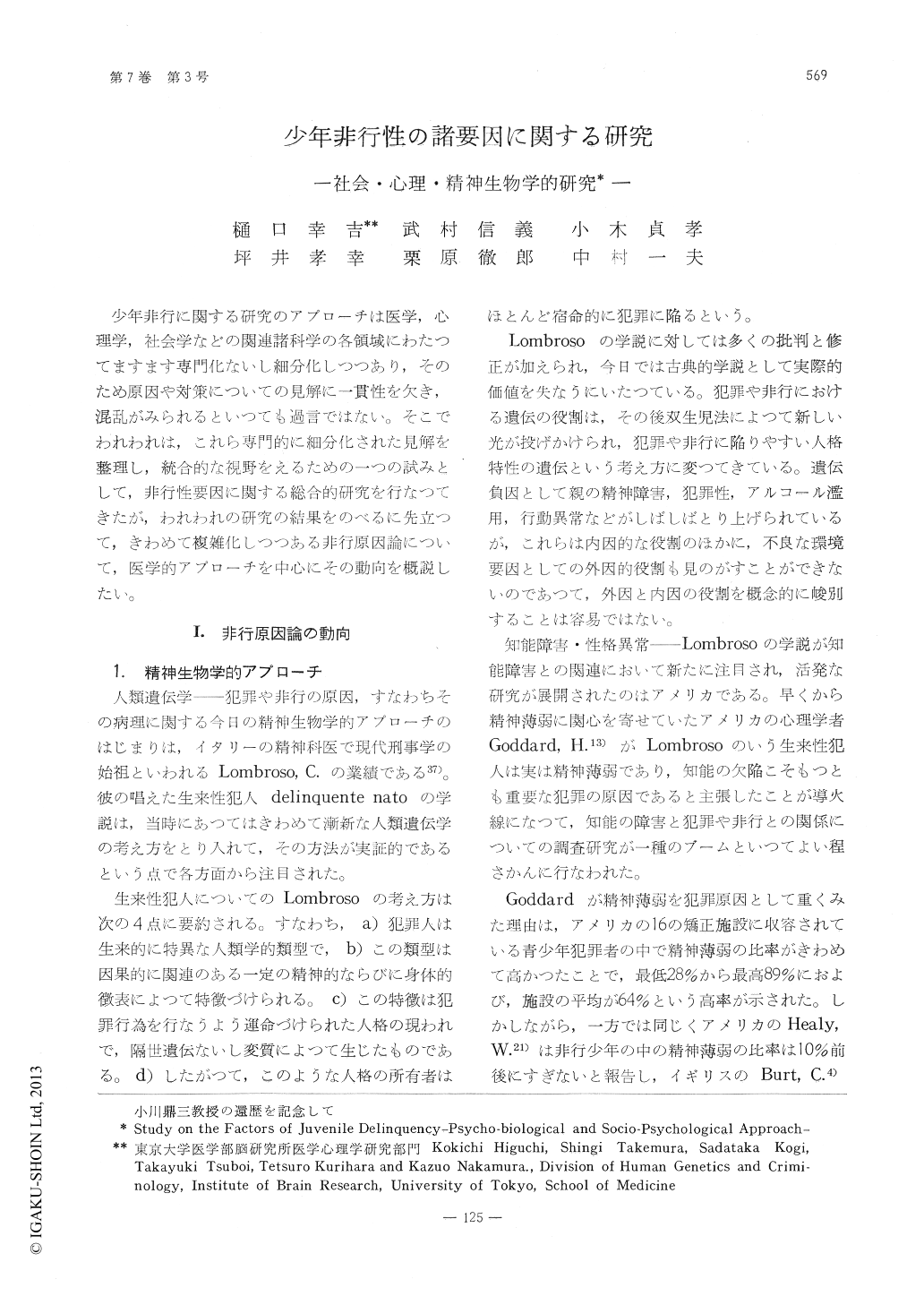Japanese
English
- 有料閲覧
- Abstract 文献概要
- 1ページ目 Look Inside
少年非行に関する研究のアプローチは医学,心理学,社会学などの関連諸科学の各領域にわたつてますます専門化ないし細分化しつつあり,そのため原因や対策についての見解に一貫性を欠き,混乱がみられるといつても過言ではない。そこでわれわれは,これら専門的に細分化された見解を整理し,統合的な視野をえるための一つの試みとして,非行性要因に関する総合的研究を行なつてきたが,われわれの研究の結果をのべるに先立つて,きわめて複雑化しつつある非行原因論について,医学的アプローチを中心にその動向を概説したい。
As an integrated psychobiglooical and sociopsychological approach to clarify the causal factors of juvenile delinquency, we carried out the varidation study of three kinds of Early Prediction Tables by Glueck, that is social, psychological and psychiatric prediction table.
At a certain number of times, the validation of Glueck Prediction Tables has hitherto been carried out, but there has no instance either in Japan or in foreign countries of such varidation of three kinds of prediction tables having ever been carried out with respect to the same subjects at the same time.
In accordance with the original method of Glueck two groups of persistent young delinquents and non-delinquents were made the subjects. The delinquents were 107 inmates of reform and training schools and the non-delinquents were 154 boys, selected from among attendants at public secondary schools. Both groups were of Japanese boys chosen from those who had been living in the underpriviledged neighborhood in large cities for 2 years or more prior to our study and as much as possible those who were proximate in intelligence, age, etc.
Three kinds of prediction tables were applied to both groups of delinquents and non-delinqueuts side by side. But it was technically difficult to apply any of the prediction tables by going back to the times of 6 years of age. So that identifiable powers of the present time were compared.
As the result, the highest identifiable power is in the psychiatric prediction table (92.1%). The social prediction table which had the highest identifiable power in Glueck's study is the next to this, but its identifiable power is not so high (66.9%). The identifiable power of the psychological prediction table by Rorschach Test is the lowest (59.8%).
In our country also, Glueck's early stage prediction table can be said, of any of the three of them, to be capable of identifying delinquents and non-delinquents to a considerable degree. However, there are problems such as to make scoring different from the original method, etc. and it is necessary that a broader test and follow-up study should be carried out. The other problem is that the three kinds of predictive factors are not necessarily the causal factors of delinquency itself. Our study showed that these factors were not in so close interrelation.

Copyright © 1963, Igaku-Shoin Ltd. All rights reserved.


